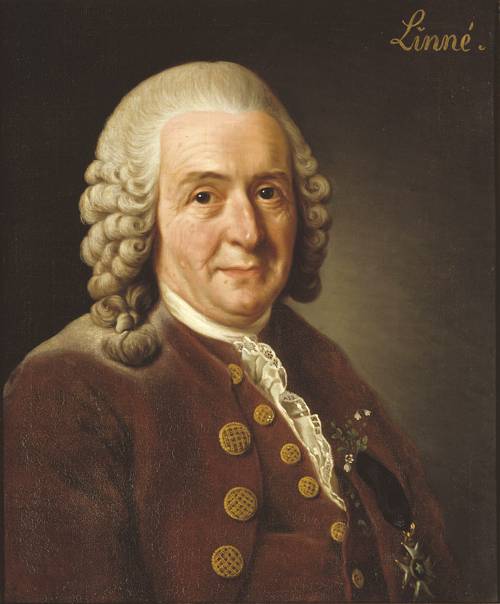
FAQ About Carl Linnaeus

Who was Carl Linnaeus?
Carl Linnaeus was a Swedish botanist, physician, and zoologist, renowned for formalizing the modern system of naming organisms called binomial nomenclature. Born on May 23, 1707, in Råshult, Sweden, Linnaeus is often referred to as the "father of modern taxonomy" and is considered one of the most significant figures in the field of biology.

What is binomial nomenclature?
Binomial nomenclature is a formal system of naming species of living things by giving each a name composed of two parts. These are usually Latinized words, comprising the genus name and the specific epithet. For example, in Homo sapiens, Homo is the genus and sapiens is the species. This system, created by Carl Linnaeus, ensures that every species has a unique and universally accepted scientific name.

When did Carl Linnaeus develop the binomial nomenclature system?
Carl Linnaeus introduced the binomial nomenclature system in the mid-18th century. The system was first comprehensively used in his seminal work, "Systema Naturae," which was published in various editions starting in 1735. It became widely accepted by the scientific community as a standardized method for classifying and naming organisms.

Why is Carl Linnaeus known as the 'father of modern taxonomy'?
Carl Linnaeus is known as the 'father of modern taxonomy' because he developed a standardized system for naming and classifying organisms that are still in use today. By establishing binomial nomenclature, Linnaeus transformed biological classification, making it more systematic and providing a universal language for scientists. This work laid the foundation for modern biological sciences.

What were some of Carl Linnaeus's major works?
Carl Linnaeus's major works include "Systema Naturae," "Species Plantarum," and "Critica Botanica." "Systema Naturae," first published in 1735, is his most famous work, where he introduced his classification system. "Species Plantarum" (1753) laid the foundation for plant taxonomy and is considered the starting point for the modern botanical nomenclature.

Did Carl Linnaeus contribute to areas outside of taxonomy?
Yes, Carl Linnaeus contributed to various fields outside of taxonomy. He made significant contributions to botany, ecology, and medicine. As a physician, he practiced medicine and taught at Uppsala University. His work in organizing plants and animals also laid the groundwork for future studies in ecology and natural history.

What influence did Carl Linnaeus have on modern science?
Carl Linnaeus's influence on modern science is profound, as his work established the foundation of taxonomy and biological classification. His system of binomial nomenclature is still used today, facilitating communication and research across the globe. Linnaeus's methodologies and organizational principles also heavily influenced the development of modern biology, systematics, and conservation.

Where did Carl Linnaeus spend most of his professional career?
Carl Linnaeus spent most of his professional career in Sweden, primarily at Uppsala University, where he was a professor of medicine and botany. Uppsala served as a vibrant center for his research and teaching activities, helping him to publish extensively and mentor numerous students who would continue his scientific legacy.

How did Carl Linnaeus classify humans in his taxonomy?
Carl Linnaeus classified humans within the animal kingdom under the genus Homo, with the specific epithet sapiens, giving the binomial name Homo sapiens. This was part of his significant contribution to classification, using the same system of binomial nomenclature he applied to all other animal and plant species.

Are there any common misconceptions about Carl Linnaeus's work?
A common misconception about Carl Linnaeus's work is that his classifications were static and unchanging. In reality, Linnaeus recognized that his system was a starting point and encouraged future naturalists to refine and expand his classifications based on new discoveries and scientific insights.

How did Linnaeus's work impact naming conventions across different languages?
Linnaeus's work, through the adoption of Latinized binomial nomenclature, had an enormous impact on naming conventions by standardizing scientific names worldwide. This helped bridge language barriers and created a universal language among scientists, ensuring consistency and clarity in the identification and communication of species across different languages and regions.

What challenges did Carl Linnaeus face in implementing his taxonomy system?
Carl Linnaeus faced several challenges in implementing his taxonomy system, including resistance from traditionalists who were accustomed to existing classification systems. His system required a shift to Latinized names, which was initially difficult for some to accept. Additionally, he had to convince the scientific community that his system was more efficient and beneficial for biological research.

How did Linnaeus's classification system evolve over time?
Linnaeus's classification system evolved as it was further refined and expanded by subsequent scientists. Initially, his system was based on morphological characteristics and the observable traits of organisms. Over time, with advances in genetics and molecular biology, the system has incorporated evolutionary relationships, refining and expanding Linnaeus's original framework for modern taxonomy.

Did Carl Linnaeus receive any recognition during his lifetime?
Yes, Carl Linnaeus received considerable recognition during his lifetime. He was a member of several European scientific societies and was knighted by the Swedish king, gaining the noble surname von Linné. His work was highly regarded, earning him an international reputation as a leading scientist in natural history and taxonomy.

What was Carl Linnaeus's educational background?
Carl Linnaeus's educational background included studies at Lund University and Uppsala University, where he studied medicine and botany. His academic training equipped him with the knowledge and skills necessary for his pioneering work in taxonomy and scientific classification.

In what way is Linnaeus's classification different from modern phylogenetic trees?
Linnaeus's classification was primarily based on the morphology and physical characteristics of organisms, grouping them into a hierarchical system. In contrast, modern phylogenetic trees incorporate genetic, evolutionary, and molecular data to establish relationships among species, reflecting evolutionary histories and common ancestries, which was not part of Linnaeus's original methodology.

How did Linnaeus's personal beliefs influence his scientific work?
Linnaeus's personal beliefs, including his deep religious faith, influenced his scientific work by emphasizing the order and harmony in nature as a reflection of divine creation. Although some of his classifications have been reassessed, he viewed his work as revealing the natural order intended by a Creator, which was a common perspective during his time.

What impact did Linnaeus's work have on exploration and scientific expeditions?
Linnaeus's work had a significant impact on exploration and scientific expeditions. His students, known as the "Linnaean Apostles," traveled worldwide to classify unknown species and gather specimens. The standardized classification and naming system made it easier to document and study the diverse species encountered during these explorations, greatly contributing to biological and geographical sciences.

How is Carl Linnaeus remembered today?
Carl Linnaeus is remembered as one of history's greatest natural scientists. His contributions to the systematization of biological taxonomy remain a cornerstone of biological sciences today. He is celebrated for his lasting impact on how species are classified and named, and his legacy continues to be honored in academia and various natural history disciplines worldwide.

Are there any collections or museums dedicated to Carl Linnaeus's work?
Yes, there are several collections and museums dedicated to Carl Linnaeus's work. The Linnaeus Museum, located in his former home in Uppsala, Sweden, preserves his extensive contributions to taxonomy. Additionally, the Uppsala University houses the Linnaean collections, which include a wide array of specimens and documents related to his research and scientific endeavors.
